Angelfish (Large) = Click Image to See More
These big beauties are considered to be quite hardy, but because of their size may present a significant challenge to the potential keeper. They need huge aquariums, up to 180 gallons to house one for its entire lifespan.[1] Two angels might be kept in the same aquarium provided it is a large aquarium, they are properly acclimated as juveniles, and they are have very different colouring and body shape.[2] However, because all Angelfish have essentially the same diet, mixing them is a feat that should be left to only advanced keepers. None are reef safe, and a potential owner should be aware that they need to have plenty of vegetable matter in their diet. They undergo major changes in colouration while maturing, and unless specified given descriptions are for adult specimens.[3][4][5]
Although Dwarf Angelfish are smaller and generally more manageable than their larger counterparts, they still have some specific care requirements. They are omnivores, but plenty of vegetable matter, preferably in the form of macroalgae, should be provided for their grazing pleasure.[20] Their suitability for reef tanks is hotly debated,[2] so add at your own risk. Specimens that have been successfully maintained in reef aquaria include the Flame and Coral Beauty angels. However, for obvious reasons they should not be put into tanks with expensive decorative macroalgae.[21][22]
Although Anthias resemble damsels in shape and size, the two should never be confused. Where damsels are the goats of the Saltwater world, Anthias (also called “Fairy Basslets in) are finicky and many starve to death in captivity. In the wild, they eat zooplankton, and will not accept anything but in the aquarium. They also need to be fed nearly constantly, three times a day at least. The best way to ensure the health and longevity of an Anthias is to attach a refugium where you can grow copepods to “drip” into the display tank. Unlike many other saltwater aquarium inhabitants, they can be kept in groups.[35]
| Image | Description | |||||
|---|---|---|---|---|---|---|
| Bartlett’s anthias | Pseudanthias bartlettorum | Yes | Moderate | Back and face light yellow, underside pink with a swallowtail-shaped caudal fin. | 9 cm (3.5 in) | |
| Bicolor anthias | Pseudanthias bicolor | Yes | Difficult | Similarly shaped and coloured to Bartlett’s Anthias, but with a slightly more rounded back. | 13 cm (5.1 in) | |
| Cooper’s anthias | Pseudanthias cooperi | Yes | Difficult | Orange back and finnage with white patch below the mouth running d own toward the anal fin with pink sides. |
14 cm (5.5 in) | |
| Diadem anthias | Pseudanthias parvirostris | Yes | Difficult | Pink fish with yellow streak on top of head running along the lateral line. Caudal fin is red with yellow tips. | 7 cm (2.8 in) | |
| Orangehead anthias | Pseudanthias heemstrai | Yes | Difficult | Pink underside with orange back and mask, dark red splotch on caudal fin, along with iridescent blue anal and pelvic fins. | 13 cm (5.1 in) | |
| Redbar anthias | Pseudanthias rubrizonatus | Yes | Difficult | Tannish-pink with a single vertical red stripe and a dorsal fin with the skin between the rays pulled back like on a lionfish. | 12 cm (4.7 in) | |
| Lyretail anthias, Sea Goldie | Pseudanthias squamipinnis | Yes | Difficult | Females are orange with lyre-shaped caudal fin. Males are fuchsia with red markings on fins | 15 cm (5.9 in) | |
| Squareback anthias | Pseudanthias pleurotaenia | Yes | Difficult | Red back and pink underside with distinctive blue square shaped marking and blue fins. | 20 cm (7.9 in) | |
| Stocky anthias | Pseudanthias hypselosoma | Yes | Difficult | Orange back with cream colored underside. As its name suggests, slightly stockier than other Anthias. | 19 cm (7.5 in) | |
| Threadfin anthias | Pseudanthias huchtii | Yes | Difficult | Olive green with black caudal fin and red stripe running from the eye to the pectoral fin. | 12 cm (4.7 in) |
In this exceedingly large group of fish, few are considered proper aquarium inhabitants, for various reasons including diet and size. Basses vary greatly from species to species, and do appropriate research before purchasing a specimen. Many unsuspecting hobbyists bring home cute little specimens of popular aquarium fish such as the lyretail grouper, only to realize several months later that they do not have the resources to care for a meter-long that may cost hundreds of dollars a month to feed.[36][37][38][39][40]
| Image | Description | |||||
|---|---|---|---|---|---|---|
| African grouper | Cephalopholis taeniops | No | Easy | 69 cm (27.2 in) | ||
| Vermillion seabass | Cephalopholis miniata | 40 cm (15.7 in) | ||||
| Blacktip grouper | Epinephelus fasciatus | No | easy | The tips of the spines of the dorsal fin are black, and it may have a dark red cap above the eyes. There is a variant with a uniformly pale body except for the frontal part. | 40 cm (15 .7 in) |
|
| Blue and Yellow grouper | Epinephelus flavocaeruleus | No | Moderate | 90.0 cm (35.4 in) | ||
| Blue dot grouper | Cephalopholis argus | No | Moderate | Deep black to tan fish with blue spots throughout. | 50 cm (19.7 in) | |
| Blue line grouper | Cephalopholis formosa | No | Moderate | Dark tan with horizontal blue stripes that are not particularly straight. The caudal fin has more of these stripes, and they radiate from the base of the fin out to the tips. | 34 cm (13.4 in) | |
| Chalk bass | Serranus tortugarum | Yes | Easy to Moderate | Blue iridescent body with distinctive black topside that is interrupted by small vertical blue stripes. | 8 cm (3.1 in) | |
| Coney grouper | Cephalopholis fulva | No | Moderate | 41 cm (16.1 in) | ||
| Golden grouper | Mycteroperca rosacea | No | Moderate | 86 cm (33.9 in) | ||
| Golden stripe soapfish | Grammistes sexlineatus | No | Moderate | Chocolate brown with light yellow horizontal stripes. Similar in patterning to C. argus (with exception to the coloration). | 30 cm (11.8 in) | |
| Harlequin bass | Serranus tigrinus | Yes | Easy to Moderate | Very striking black and white checkerboard pattern all over, with very long tapering nose. | 29 cm (11.4 in) | |
| Leaflip grouper | Pogonoperca punctata | No | Moderate | Sports a large, hinged mouth and is tan with little spots. Has brown triangle shaped markings down the spine. | 35 cm (13.8 in) | |
| Marine beta | Calloplesiops altivelis | Yes | Easy | 15 cm (5.9 in)[41][42] | ||
| Miniatus grouper or Vermillion seabass | Cephalopholis miniatus | No | Moderate | Orange to red with large blue spots throughout. | 45 cm (17.7 in) | |
| Orange spot grouper | Cephalopholis panamensis | No | Easy | 30 cm (11.8 in) | ||
| Panther grouper | Cromileptes altivelis | No | Difficult | Gorgeous pure white fish with black spots and a distinctive “hump” on the head, leading to a popular common name, “Humpback Grouper”. | 75 cm (29.5 in) | |
| Painted comber | Serranus scriba | No | Easy to Moderate | Large fish with classic Bass body, Silvery in colour with vertical tan stripes and a blue underside. | 36 cm (14.2 i n) |
|
| Polleni grouper | Cephalopholis polleni | No | Moderate | 43 cm (16.9 in) | ||
| Red flag grouper | Cephalopholis urodeta | No | Moderate | Very similar to C. miniatus, but the caudal fin is dark. | 28 cm (11.0 in) | |
| Lyretail grouper | Variola louti | No | Moderate | Silver back changing to red around the underside, darkening toward the caudal fin, which is lyre-shaped with neon green edging. | 80 cm (31.5 in) | |
| Saddle grouper | Plectropomus laevis | No | Easy | 125 cm (49.2 in) | ||
| Spotted grouper | Epinephelus summana | No | Moderate | Dark black fish with many light green spots all over body, increasing in number toward the posterior. | 52 cm (20.5 in) | |
| Strawberry grouper | Cephalopholis spiloparaea | No | Moderate | 30 cm (11.8 in) | ||
| V tail grouper | Cephalopholis urodelus | No | Easy-Moderate | 28 cm (11.0 in) |
Basslets and Assessors are small, long bodied fish strongly resembling Anthias. Their care requirements, however, are closer to those of damsels. They should be kept individually, and generally not with other fish of similar shape and colour. Feeding is easy: they will generally eat any meaty foods offered. Good water quality should be maintained at all times.[43]
| Image | Description | |||||
|---|---|---|---|---|---|---|
| Black cap gramma | Gramma melacara | Yes | Moderate | Purple with a black mask beginning at the mouth and ending at the base of the dorsal fin. | 6 cm (2.4 in) | |
| Blue assesor | Assessor macneilli | Yes | Easy to Moderate | Entirely navy blue with white edging of the dorsal fin. | 7 cm (2.8 in) | |
| Royal gramma | Gramma loreto | Yes | Easy to Moderate | Purple head and anterior, abruptly changing to yellow about halfway down the body. Has black marking through eye and another on the dorsal fin. Do not confuse with the Brazilian Gramma or the Bicolor Dottyback. | 5 cm (2.0 in) | |
| Brazilian gramma | Gramma brasiliensis | Yes | Easy to Moderate | Very similar to the royal gramma, however the change from purple to yellow occurs farther down the body and the black markings are absent. | 6 cm (2.4 in) | |
| Yellow assessor | Assessor flavissimus | Yes | Easy to Moderate | Bright lemon yellow with peach fringing of the dorsal fin and around the eye. | 7 cm (2.8 in)[44] |
Batfish are gorgeous and striking fish that are not common in aquaria for one major reason: they get huge. A two or three hundred gallon tank is needed for one, minimum, and larger is better. They start out as tiny, manageable-looking cuties, which often fools aquarists into purchasing them for their small aquariums. However they quickly grow to gargantuan proportions, and require large amounts of food as well as space, so beware. They are not reef safe and should be fed plenty of large meaty foods. Batfish change greatly as they grow, however the potential aquarist is most likely to see them in their juvenile form, so that is the description of the colouration here. They all have generally the same body shape: disk-like with tall dorsal and anal fins, similar to a Freshwater Angelfish.
| Image | Description | |||||
|---|---|---|---|---|---|---|
| Orbiculate batfish | Platax orbicularis | No | Difficult | Brown with generally random black markings resembling a rotting leaf. | 50 cm (19.7 in) | |
| Dusky batfish | Platax pinnatus | No | Difficult | Dark black body completely edged by distinctive yellow and orange. | 45 cm (17.7 in) | |
| Teira batfish | Platax teira | No | Difficult | Silver with black fins and a black stripe across the face. | 70 cm (27.6 in) |
Blennies are popular aquarium fish, and for good reason. They are peaceful, colorful, and many are downright helpful. For example, the aptly named Lawnmower Blenny will keep your green algae well trimmed and presentable. With the exception of Fang Blennies, Blennies are totally reef safe- in fact a reef environment is really best for them because they can be shy and the intricate rockwork of a reef provides ample hiding spaces. They are omnivores and should be fed a varied diet of frozen or live foods and plant matter. Blennies do not have teeth or functional jaw, so food must be small enough for them to swallow whole.
Blennies are often confused with Gobies, but there is an easy way to tell the difference. Gobies have two distinct dorsal fins, Blennies have a single dorsal fin that runs the length of their body. Also, Gobies‘ pelvic fins are fused to form a sucker, similar to Remoras.[45]
Members of the family Tetraodontidae, Boxfish, Blowfish or Pufferfish and their cousins Cowfishes and Porcupinefishes can be very personable and quirky pets, for the prepared.
They are not thought of as an ordinary aquarium tank mate, but are quickly gaining popularity. They do pose a hazard in the community tank however. They are capable of releasing a very powerful toxin which can kill other fish and in some cases, the boxfish itself. They generally only use it when threatened or dying, but can become disturbed easily with aggressive tank mates or overcrowded aquarium. Generally they are reef safe, though they will pick at invertebrates if not fed well enough.
Many people think puffed up Pufferfish, like in the picture, are cute, but an owner should never subject their pet to this as they are often unable to expel the air should they be out of the water. To prevent this, never remove a puffer from the water.[46]
Butterflyfish, when properly cared for, can make beautiful and distinctive additions to fish only marine aquariums. Often large and usually not suited for those with smaller aquariums, nor those of the faint of heart. Nevertheless, when fed a varied diet and kept in pristine conditions, Butterflyfish will usually thrive. That is, if you choose the right species. With Butterflyfish, usually a fish is going to survive, or it’s not. Many species simply cannot be kept in captivity, and potential keepers must take care to only purchase those species that have a fighting chance. Also, be very picky about which specimen you choose- any sign of mishandling should be taken as a red flag.
The following species are relatively hardy and an experienced aquarist should have no trouble with them, so long as they are diligent.[47]
| Image | Description | |||||
|---|---|---|---|---|---|---|
| Copperbanded butterflyfish | Chelmon rostratus | Caution | Difficult | Silver with black edged gold stripes, a long nose, and a black eyespot on the dorsal fin. | 20 cm (7.9 in) | |
| Schooling bannerfish | Heniochus diphreutes | No | Moderate | Sometimes referred to as the “Poor Man’s Moorish Idol” because of the resemblance. White and black striped with yellow caudal fin and a dorsal fin that forms a long, thin banner. | 21 cm (8.3 in) | |
| Longnose butterflyfish | Forcipiger flavissimus | No | Moderate | From the pectoral fins forward, black above the eye and silver below, with an exceptionally mouth. Past the pectoral fins, bright yellow with an eyespot on the anal fin. | 22 cm (8.7 in) | |
| Raccoon butterflyfish | Chaetodon lunula | No | Moderate | Very distinctive and complexly colored. Is mostly yellow with a darker saddle and a black and white mask. | 20 cm (7.9 in) | |
| Redback butterflyfish | Chaetodon paucifasciatus | No | Moderate | White with black stripes that form chevrons on the side and a bright red patch on the posterior. | 14 cm (5.5 in) | |
| Merten’s butterflyfish | Chaetodon mertensii | No | Moderate | White with fuzzy black stripes and a yellow posterior. Also has a black line through the eye. | 12.5 cm (4.9 in) | |
| Teardrop butterflyfish | Chaetodon unimaculatus | No | Moderate | Completely yellow with the exception of black stripes at the base of the caudal fin and through the eye, and an eyespot directly below the dorsal fin. | 20 cm (7.9 in) | |
| Latticed butterflyfish | Chaetodon rafflesii | No | Moderate | Very similar to C. unimaculatus, but with scales that are brighter than the body, forming a lattice-like pattern, and lacking the eyespot. | 18 cm (7.1 in) | |
| Pacific double saddle butterflyfish | Chaetodon ulietensis | No | Moderate | Silver with two dark saddles over the body (plus a dark mask) and yellow dorsal and caudal fins. | 15 cm (5.9 in) | |
| Sickle butterflyfish | Chaetodon falcula | No | Moderate | Often confused with C. ulietensis, but easily distinguished. The saddles are wedge shaped rather than stripes and do not reach the underside. Overall more yellow coloring. | 20 cm (7.9 in) | |
| Threadfin butterflyfish | Chaetodon auriga | No | Moderate | White anterior with thin black stripes at 45 and 120 degree angles from the head. Posterior is yellow, but with a black wedge shape where the stripes meet the yellow coloring. | 23 cm (9.1 in) | |
| Tinker’s butterflyfish | Chaetodon tinkeri | No | Moderate | White with small black spots, a yellow mask, and a black dorsal fin. | 15 cm (5.9 in) | |
| Masked butterflyfish | Chaetodon semilarvatus | No | Moderate | Bright lemon yellow with subtle vertical orange stripes and a black splotch behind the eye. | 23 cm (9.1 in) |
One of the few groups of shoaling fish commonly available to marine aquarists, Cardinalfish are nocturnal and tend to be quite shy. They require meaty foods and will often not take prepared foods such as flakes and tablets. For the best chance of success, keep a wide variety of frozen foods on hand. In the event of a hunger strike, they will almost always take adult brine shrimp. As far as other care requirements they are similar to damsels: not picky. So long as they are properly acclimated, they tolerate a wide range of parameters. A marine aqaurist should watch the ammonia/nitrite levels of the environment, as cardinalfish are particularly sensitive to these chemicals.[48]
| Image | Description | |||||
|---|---|---|---|---|---|---|
| Fragile cardinalfish | Apogon fragilis | Yes[49]:133 | Moderate[49]:133 | 5 cm (2.0 in) | ||
| Banggai cardinal | Pterapogon kauderni | Yes | Moderate | Black and silver striped with very tall fins and many white spots. Wild populations have been decimated, consider captive bred specimens. | 8 cm (3.1 in) | |
| Blackstripe cardinalfish | Apogon nigrofasciatus | Yes | Moderate | Body completely covered in horizontal yellow and black stripes, with red fins. | 10 cm (3.9 in) | |
| Bluebarred cardinalfish | Apogon flores | Yes[49]:133 | Moderate[49]:133 | 5 cm (2.0 in) | ||
| Bluestreak cardinalfish | Apogon leptacanthus | Yes[49]:133 | Moderate[49]:133 | 6.5 cm (2.6 in) | ||
| Flamefish | Apogon maculatus | Yes | Moderate | Bright red with black spots at the base of the caudal fin, under the second dorsal fin, and on the operculum. | 11 cm (4.3 in) | |
| Frostfin cardinalfish | Apogon hoeveni | Yes[49]:133 | Moderate[49]:133 | 5 cm (2.0 in) | ||
| Gilbert’s cardinalfish | Apogon gilberti | Yes[49]:133 | Moderate[49]:133 | 5 cm (2.0 in) | ||
| Girdled cardinalfish | Archamia zosterophora | Yes[49]:133 | Moderate[49]:133 | 8 cm (3.1 in) | ||
| Orange-striped cardinalfish | Apogon cyanosoma | Yes | Moderate | Light yellow with iridescent yellow horizontal stripes. | 8 cm (3.1 in) | |
| Pajama cardinalfish | Sphaeramia nematoptera | Yes, caution with small shrimp[49]:132 | Easy[49]:132 | This fish displays three distinct color bands: the first, stretching from the nose to base of the first dorsal fin, is a tannish peach. The second, a thin band which runs down the center of the fish, is chocolate brown, and the posterior of the fish is white with brown spots. | 8.5 cm (3.3 in) | |
| Ochre-striped cardinalfish | Apogon compressus | Yes | Moderate | Almost identical to A. nigrofasticus, but with blue eyes. | 12 cm (4.7 in) | |
| Ringtailed cardinalfish | Apogon aureus | Yes | Moderate | Yellow body with a black stripe (ring) at the base of the caudal fin and iridescent blue streaks across the eye. | 14.5 cm (5.7 in) |
Chromis are perhaps the ultimate reef fish. Generally peaceful, most species are easy to take care of and quite colorful. Like anthias, they will school, but in many cases this tendency disappears as they age. They are, nevertheless, at least ambivalent with their own species, as well as completely reef safe. Like Damsels and Anemonefish, their close cousins, Chromis are omnivores and will accept most foods offered. A flake staple is usually sufficient, but for best color and health supplement with frozen and live foods when possible.[50]
Clownfish, more technically known as Anemonefish, are the classic aquarium fish. Both hardy and attractive, they are perhaps best known for their symbiotic relationship with Sea Anemones, a relative of coral. In the wild, Anemonefish are always found with a host, leading many potential keepers to believe that an anemone is necessary to keep them. Anemonefish are easy to keep, but their cnidarian counterparts are inordinately finicky and need high light levels, and luckily Anemonefish will thrive without them. Aquarists often find that Anemonefish will host in other things, from corals and Feather Duster Worms to powerheads and other equipment. Anemonefish care is identical to that of Damselfish, as they are actually very closely related.[51][52]
All Damselfish can be considered reef-safe, sometimes excluding larger, more aggressive Dascyllus varieties. Some Damselfish will host in anemones like clownfish. Most Damselfish are aggressive and difficult to catch once you put them in an aquarium.
Damselfish change gender as they grow larger and older. Small damselfish are ungendered. Eventually, they become males if no males prevent them from doing so. 1 or sometimes 2 males live with a female and guard over the eggs. Females are the largest fish and dominant over the males and juveniles. They will not allow other females into an area they have claimed as their territory without a fight. They may not allow new males or juveniles, either. Aggression increases with each change.[51][53][54]
Most should be kept as pairs or small groups where all individuals are added at once.[55][56]
Dragonets are often mis-categorized as gobies or blennies by fish sellers. They are bottom-dwelling fish that constantly hunt tiny invertebrates for food. Most starve to death in a marine aquarium unless you provide a refugium or place for the invertebrates to reproduce safely without any fish being able to reach them.[57][58]
| Image | Description | |||||
|---|---|---|---|---|---|---|
| Mandarinfish | Synchiropus splendidus | Yes | Difficult; attach a refugium to the tank | A brightly colored member of the dragonet family. Eats only copepods and will die in captivity without an adequate supply, which can only be had in very large, well established reef tanks | 6 cm (2.4 in)[59] | |
| Red scooter blenny | Synchiropus stellatus | Yes | Moderate; attach a refugium to the tank | Not a true blenny. Often only eats live copepods and amphipods. | 12 cm (4.7 in) | |
| Ocellated Dragonet | Synchiropus ocellatus | Yes | Moderate; attach a refugium to the tank | Also known as Scooter Blenny though not a true blenny. Will often only eats live copepods and amphipods. | 8 cm (3.1 in) | |
| Spotted mandarin | Synchiropus picturatus | Yes | Difficult; attach a refugium to the tank | Often only eats live copepods and amphipods. | 10 cm (3.9 in) |
Most eels are easily kept in a large aquarium, although several species such as the blue ribbon eel should usually be avoided. With any moray eel care must be taken to secure the lid as one of the most common causes of death is escaping from the tank, and onto the floor.[60][61]
| Image | Description | |||||
|---|---|---|---|---|---|---|
| Banded snake eel | Myrichthys colubrinus | No | Easy | 97 cm (38.2 in) | ||
| Banded eel | Echidna polyzona | No | Intermediate | 69 cm (27.2 in) | ||
| Black edge moray eel | Gymnothorax saxicola | No | Moderate | 60 cm (23.6 in) | ||
| Blue ribbon eel, black ribbon eel | Rhinomuraena quaesita | No | Difficult | 130 cm (51.2 in) | ||
| Chainlink moray eel | Echidna catenata | No | Easy | Can be kept with fish too small to swallow | 165 cm (65.0 in) | |
| Dragon moray eel | Enchelycore pardalis | No | Easy | A fish eater that will eat anything it can fit in its mouth. When available is typically quite expensive[62] | 92 cm (36.2 in) | |
| Golden dwarf eel | Gymnothorax melatremus | Yes | Moderate | Rarely available, among the smallest of the moray eels | 26 cm (10.2 in) | |
| Golden moray eel | Gymnothorax miliaris | May eat fish and shrimp | Easy to moderate | These fish should only be kept in fish-only tanks as any small invertebrates will be looked on as food. Keep with fish large enough not to be eaten. Feed on a diet of whitefish, cockles, cod roe, haddock and frozen foods. | 70.0 cm (27.6 in) | |
| Green moray eel | Gymnothorax funebris | No | Difficult | Requires a 180 gallon tank with tight fitting lid. Compatible with rays, sharks, and other large fish. | 250 cm (98.4 in) | |
| Jeweled moray eel | Muraena lentiginosa | No | Easy | 61 cm (24.0 in) | ||
| Kidako moray eel | Gymnothorax kidako | No | Easy | 91 cm (35.8 in) | ||
| Peppered moray | Gymnothorax picta | No | Moderate | 135 cm (53.1 in) | ||
| Snowflake eel | Echidna nebulosa | May eat shrimp if underfed | Easy | A pebble-tooth moray that generally eats crustaceans and similar. Safer in reef aquariums than other species but be prepared to remove it in case it starts to eat desired invetebrates. | 100 cm (39.4 in) | |
| Spotted garden-eel | Taenioconger hassi | With Caution | Difficult | Rarely available, best avoided by inexperienced aquarists | 40 cm (15.7 in) | |
| Spotted Snake eel | Myrichthys maculosus | No | Moderate | Requires at least six in of substrate | 100 cm (39.4 in) | |
| Tessalata eel, or laced moray | Gymnothorax favagineus | No | Easy | 300 cm (118.1 in) | ||
| Yellowhead moray eel | Gymnothorax fimbriatus | No | Easy | 80 cm (31.5 in) | ||
| Yellow mouth moray eel | Gymnothorax nudivomer | No | Intermediate | 178 cm (70.1 in) | ||
| Whitemouth moray eel | Gymnothorax meleagris | With Caution | Intermediate | 120 cm (47.2 in) | ||
| Carpet eel-blenny | Congrogadus subducens | No | Easy | Actually a Dottyback, but has the body shape of an eel. | 45 cm (17.7 in) | |
| Zebra moray | Gymnomuraena zebra | No | Easy | One of the easier moray eels to keep, is usually safe with most fish but will eat most invertebrates. | 150 cm (59.1 in) |
Less often kept than their relatives the Triggerfish and Puffers there are many filefish that make good aquarium residents, and a few that require specialized diets making it hard to sustain them in an aquarium.[63][64] See Rabbitfish
A type of Anglerfish, Frogfish are ambush predators with huge mouths. They are capable of eating fish up to twice their length so care should be taken in choos
ing tank mates.[65]
While not as common a choice for aquariums as many other species, they are typically hardy and brightly colored[66] Typically are hardy and do not harm invertebrates which makes them a good choice of fish for a reef tank.[67][68]
Attractive and relatively small, Hawkfish make excellent additions to fish only or FOWLR aquariums. With extreme caution taken, they could be kept in reef aquariums, but because of their propensity to eat small ornamental shrimps and other mobile invertebrates (usually leaving sessile invertebrates alone) they are not considered reef safe. Lacking a swim bladder, Hawkfish can often be found resting in crevices of rocks or among the branches of corals or gorgonians. Hawkfish are easy to care for and not picky at all about water quality. A varied diet, including spirulina and small meaty foods like Mysis is recommended.[69]
Jawfish are burrowers and require a sandy substrate of sufficient depth.[70]
| Image | Description | |||||
|---|---|---|---|---|---|---|
| Black cap jawfish | Opistognathus lonchurus | Almost always | Moderate | Requires a 30 gallon tank and 3 inches (7.6 cm) substrate. Tank should remain tightly lidded. May eat small shrimp. | 10 cm (3.9 in) | |
| Blue dot jawfish | Opistognathus rosenblatti | Yes | Moderate | 9 cm (3.5 in) | ||
| Dusky jawfish | Opistognathus whitehurstii | Yes | Moderate | Requires a 30 gallon tank and 3 inches (7.6 cm) sand substrate. Tank should remain tightly lidded. | 14 cm (5.5 in) | |
| Yellowhead jawfish | Opistognathus aurifrons | Yes | Moderate | Requires a 30 gallon tank and 5–7 inches (13–18 cm) soft substrate. Tank should remain tightly lidded. | 10 cm (3.9 in) |
“Lionfish” specifically refer to the genus Pterois within the family Scorpaenidae. They have venomous spines and should be treated with caution.[71] Other species within Scorpaenidae but outside Pterois may also have “lionfish” in their common names.
Pipefish are relatives of seahorses and require a similar level of care. They should only be bought by experienced aquarium owners. Captive bred specimens are sometimes available, and are significantly more likely to survive.[73]
Usually only a single specimen can be kept in an aquarium. Sometimes multiple specimens can be kept in larger aquariums, but usually this requires them to be added at the same time or they will be too territorial.[74]
Less commonly kept than some other species, many still make hardy and colorful aquarium residents.[75][76]
All rays have a poisonous spine near the base of the tail. Care must be taken to avoid this animal when performing tank maintenance and during capture.
| Image | Description | |||||
|---|---|---|---|---|---|---|
| Fiddler stingray | Trygonorhina fasciata | No | Expert | Requires a minimum 360 gallon aquarium with a 1 meter width and a fine grained substrate. Coarse substrates may damage the underside of this animal, causing infection. | ||
| Manta ray | Manta birostris | No | Expert | Requires a minimum 6.2 million gallon aquarium. | ||
| Round stingray | Urobatis halleri | No | Expert | Requires a minimum 180 gallon aquarium and a fine grained substrate. Coarse substrates may damage the underside of this animal, causing infection. | 31 cm (12.2 in) | |
| Spotted caribbean stingray | Urolophus spp. | No | Expert | Requires a minimum 180 gallon aquarium and a fine grained substrate. Coarse substrates may damage the underside of this animal, causing infection. | ||
| Thornback stingray | Platyrhinoidis triseriata | No | Expert | Requires a minimum 360 gallon aquarium with a 1 meter width |
Because they are relatively inactive fish, most species can be kept in smaller aquariums than other equally large fish, and 30 gallon tanks are not unusual. Because they are capable of eating fish that are surprisingly large, but will often be picked at by fish that eat invertebrates a species tank is often set up for them. Some fish will never accept anything but live food, typically these specimens are fed on gut packed guppies, mollies, or ghost shrimp. Similarly to the lionfish, care should be taken when handling these fish as they are also venomous.
[78][79]
It takes a special aquarist to maintain these delicate beauties. A potential keeper must be dedicated and willing to throw artistic creativity to the winds- as what seahorses need is not always beautiful. They require taller tanks, live/frozen food, and many hitching posts, as well as very peaceful tankmates. In fact, beginners would be well-advised not to mix seahorses with any other species until they have more experience.
Seahorses found in stores are generally Captive Bred, but occasionally one might find a wild caught (WC) specimen. WC Seahorses should only be purchased by seahorse experts who are going to breed them, as they tend to be finicky and most are endangered in the wild.
One of the advantages of Seahorses is that many species stay small and can (in fact, some should) be kept in smaller tanks, making them ideal for aquarists who are pressed for space or money.[82][83]
Seahorses are among the few popular marine aquarium species that can be temperate. Species vary in their temperature requirement, so here an extra category has been added.
TR=Tropical ST=Sub-Tropical TM=Temperate
Typically are hardy fish that can be kept with a wide variety of tankmates.[84][85]
Will outgrow most home aquariums.[86][87]
Tangs generally feed on algae, though there are a few carnivorous species. Most tangs will not tolerate other fish the same color and/or shape as them. They have a spine on their tails that can cut open other fish and unprotected hands. All tangs should be given plenty of swimming room; try to have at least a 4′ tank. Contrary to popular belief they will tolerate smaller (4′ to 5′) tanks just fine but tend to live better in larger tanks, over 5′.[89] Though often categorized as gobies, tilefish are a separate species.[92][93]
While they are generally considered monsters that will chomp invertebrates, a few species can make great reef fish. Other more aggressive species such as the Undulated Trigger, and Clown Trigger will sometimes be so aggressive that it is necessary to keep as the sole inhabitant of the aquarium. All will require large tanks, with good filtration.[94][95][96]
A diverse group of fish with an equally wide range of characteristics. Some wrasse species are aggressive towards small fish and invertebrates, others are reef safe. Some are quite hardy, some typically die within weeks.[98][99]
See also
References
- ^ Michael, Scott (December 2003). “Beautiful Holocanthus Angels”. Aquarium Fish Magazine: pp. 58–64.
- ^ a b Fenner, Robert (2001). The Conscientious Marine Fishkeeper. Neptune City, NJ: THF Publications. ISBN 978-189008720-9.
- ^ “Aquarium Fish: Large Angels in the Home Aquarium, Part 1”. Retrieved 2008-12-18.
- ^ “Aquarium Fish: Large Angels in the Home Aquarium, Part II”. Retrieved 2008-12-18.
- ^ “Marine Angelfishes, Family Pomacanthidae”. Retrieved 2008-12-18.
- ^ Froese, Rainer, and Daniel Pauly, eds. (2008). “Genicanthus bellus“ in FishBase. July 2008 version.
- ^ Froese, Rainer, and Daniel Pauly, eds. (2008). “Holocanthus bermudensis“ in FishBase. July 2008 version.
- ^ Froese, Rainer, and Daniel Pauly, eds. (2008). “Pomacanthus zonipectus“ in FishBase. July 2008 version.
- ^ Froese, Rainer, and Daniel Pauly, eds. (2008). “Pomacanthus imperator“ in FishBase. July 2008 version.
- ^ Froese, Rainer, and Daniel Pauly, eds. (2008). “Pomacanthus paru“ in FishBase. July 2008 version.
- ^ Froese, Rainer, and Daniel Pauly, eds. (2008). “Pomacanthus arcuatus“ in FishBase. July 2008 version.
- ^ Froese, Rainer, and Daniel Pauly, eds. (2008). “Pomacanthus maculosus“ in FishBase. July 2008 version.
- ^ Froese, Rainer, and Daniel Pauly, eds. (2008). “Pomacanthus semicirculatus“ in FishBase. July 2008 version.
- ^ Froese, Rainer, and Daniel Pauly, eds. (2008). “Pomacanthus navarchus“ in FishBase. July 2008 version.
- ^ Froese, Rainer, and Daniel Pauly, eds. (2008). “Holocanthus passer“ in FishBase. July 2008 version.
- ^ Froese, Rainer, and Daniel Pauly, eds. (2008). “Holacanthus ciliaris“ in FishBase. July 2008 version.
- ^ Froese, Rainer, and Daniel Pauly, eds. (2008). “Pygoplites diacanthus“ in FishBase. July 2008 version.
- ^ Froese, Rainer, and Daniel Pauly, eds. (2008). “Genicanthus semifasciatus“ in FishBase. July 2008 version.
- ^ Froese, Rainer, and Daniel Pauly, eds. (2011). “Apolemichthys xanthurus“ in FishBase. November 2011 version.
- ^ Hargreaves, Vincent (2006). The Complete Book of the Marine Aquarium. San Diego, CA: Thunder Bay Press. ISBN 987-1-57145-762-2.
- ^ “What a Darling Little Angel: The Genus Centropyge”. Retrieved 2008-12-18.
- ^ “The Pygmy Angelfishes”. Retrieved 2008-12-18.
- ^ Froese, Rainer, and Daniel Pauly, eds. (2008). “Centropyge multifasciata“ in FishBase. July 2008 version.
- ^ Froese, Rainer, and Daniel Pauly, eds. (2008). “Centropyge bispinosus“ in FishBase. July 2008 version.
- ^ Froese, Rainer, and Daniel Pauly, eds. (2008). “Centropyge argi“ in FishBase. July 2008 version.
- ^ Froese, Rainer, and Daniel Pauly, eds. (2008). “Centropyge eibli“ in FishBase. July 2008 version.
- ^ Froese, Rainer, and Daniel Pauly, eds. (2008). “Centropyge loricula“ in FishBase. July 2008 version.
- ^ Froese, Rainer, and Daniel Pauly, eds. (2008). “Centropyge vroliki“ in FishBase. July 2008 version.
- ^ Froese, Rainer, and Daniel Pauly, eds. (2008). “Centropyge heraldi“ in FishBase. July 2008 version.
- ^ Froese, Rainer, and Daniel Pauly, eds. (2008). “Centropyge flavissima“ in FishBase. July 2008 version.
- ^ Froese, Rainer, and Daniel Pauly, eds. (2008). “Centropyge acanthops“ in FishBase. July 2008 version.
- ^ Froese, Rainer, and Daniel Pauly, eds. (2008). “Centropyge flavicauda“ in FishBase. December 2008 version.
- ^ Froese, Rainer, and Daniel Pauly, eds. (2008). “Centropyge potteri“ in FishBase. July 2008 version.
- ^ Froese, Rainer, and Daniel Pauly, eds. (2008). “Centropyge ferrugata“ in FishBase. July 2008 version.
- ^ “Anthiinae – the Fancy Basses”. Retrieved 2008-12-18.
- ^ “Aquarium Fish: The Hinds of the Genus Cephalopholis”. Retrieved 2008-12-18.
- ^ “The Basses, Family Serranidae”. Retrieved 2008-12-18.
- ^ “The Basses Called Hinds, Genus Cephalopholis”. Retrieved 2008-12-18.
- ^ “The Soapfishes, Family Grammistidae, or Tribe Grammistini of the Serranidae, in part, or…”. Retrieved 2008-12-18.
- ^ “Some Guys Like ’em Big:The Genus Plectropomus”. Retrieved 2008-12-18.
- ^ “The Comet (Calloplesiops altivelis)”. Retrieved 2008-12-18.
- ^ “The Roundhead Called the Marine Betta, Calloplesiops altivelis, Family Plesiopsidae”. Retrieved 2008-12-18.
- ^ “Grammas”. Retrieved 2008-12-18.
- ^ “Yellow Assessor, Assessor flavissimus”. Retrieved 2008-12-19.
- ^ “Blennioids: Blennies and Blenny-Like Fishes”. Retrieved 2008-12-18.
- ^ “All My Puffers, Tobies, Box, Porcupine, Cowfishes”. Retrieved 2008-12-18.
- ^ “Butterflyfishes; Separating the Good Ones and Those You Don’t Want”. Retrieved 2008-12-18.
- ^ “Cardinals Not Named Pujols, Womack, or Edmonds:The Genus Cheilodipterus”. Retrieved 2008-12-18.
- ^ a b c d e f g h i j k l m n o p q r s t u v w x y z aa ab ac ad ae af ag ah ai aj ak al am an ao ap aq ar as at au av aw ax ay az ba bb bc bd be bf bg bh bi bj bk bl bm bn bo bp bq br bs bt bu bv bw bx by bz ca cb cc cd ce cf cg ch ci cj ck cl cm cn co cp cq cr cs ct cu cv cw cx cy cz da db dc dd de df dg dh Michael, Scott (2005). Reef Aquarium Fishes, 500+ Essential-To-Know Species. Neptune City, NJ: T.F.H Publications, Inc.. ISBN 978-1-8900-8789-0.
- ^ “Friendly Damsels? It Can’t be Possible!… The Genus Chromis”. Retrieved 2008-12-18.
- ^ a b “The Damsel and Anemonefishes, Family Pomacentridae”. Retrieved 2008-12-18.
- ^ “Time to Quit Clownin’
Around: The Subfamily Amphiprioninae”. Retrieved 2008-12-18. - ^ “Tiny (and one not so tiny) Terrors of the Sea: Damsels of the Genus Dascyllus”. Retrieved 2008-12-18.
- ^ “Small-Man’s Complex: The Genus Stegastes”. Retrieved 2008-12-18.
- ^ “Firefishes, Dartfishes, Wormfishes, Family Microdesmidae, Subfamily Ptereleotrinae”. Retrieved 2008-12-18.
- ^ “Worms Not Found in the Sandbed: The Genus Ptereleotris”. Retrieved 2008-12-18.
- ^ “Mandarins, Psychedelic “Gobies”, Dragonets, Scooter Blennies….YAH! Family Callionymidae”. Retrieved 2008-12-18.
- ^ “…I’d like to buy a Mandarin!”. Retrieved 2008-12-19.
- ^ “Mandarinfish, Synchiropus splendidus (syn. Pterosynchiropus splendidus)”. Retrieved 2008-12-19.
- ^ “The Moray Eels, Family Muraenidae”. Retrieved 2008-12-18.
- ^ “A Serpent For Your Reef Tank:A Look at Fish-Safe Eels”. Retrieved 2008-12-18.
- ^ “Behold the Dragon!”. Retrieved 2008-12-18.
- ^ “Filefishes, Family Monacanthidae”. Retrieved 2008-12-18.
- ^ “Files Not Meant For Your Toolbox (or Reef Aquarium!):The Genus Pervagor”. Retrieved 2008-12-18.
- ^ “The Bizarre Frogfishes, Anglerfishes, Order”. Retrieved 2008-12-18.
- ^ “Mulling Over the Goatfishes, Family Mullidae”. Retrieved 2008-12-18.
- ^ “Aquarium Fish: Gobies of the Genus Amblygobius”. Retrieved 2008-12-18.
- ^ “The Fish Of Which Dreams (or Nightmares) Are Made: The Genus Valenciennea”. Retrieved 2008-12-18.
- ^ “Hawkfishes, Family Cirrhitidae”. Retrieved 2008-12-18.
- ^ “Let’s Jaw About Jawfish”. Retrieved 2008-12-18.
- ^ “The Scorpionfishes We Call Lions, Family Scorpaenidae, subfamily Pteroinae”. Retrieved 2008-12-18.
- ^ “Twinspot Lionfish (Dendrochirus biocellatus)”. Retrieved 2008-12-18.
- ^ “There’s More to Pipes Than Just PVC:The Genus Doryrhamphus and Other Pipefish”. Retrieved 2008-12-18.
- ^ “The Dottybacks”. Retrieved 2008-12-18.
- ^ “The Fishes We Call Rabbits, Family Siganidae”. Retrieved 2008-12-18.
- ^ “You Silly Rabbit: The Genus Siganus”. Retrieved 2008-12-18.
- ^ “Blue-Lined Rabbitfish, Siganis doliatus”. Retrieved 2008-12-18.
- ^ “The Rhinopias spp. The Ultimate Scorpionfishes”. Retrieved 2008-12-18.
- ^ “Scorpionfish: Masters of Camouflage”. Retrieved 2008-12-18.
- ^ “Aquarium Fish: Leaf Scorpionfish (Taenianotus triacanthus)”. Retrieved 2008-12-18.
- ^ Michael, Scott (2005). Reef Aquarium Fishes, 500+ Essential-To-Know Species. Neptune City, NJ: T.F.H Publications, Inc.. pp. 54. ISBN 978-1-8900-8789-0.
- ^ “Seahorse Care: A basic guide to starting your first herd”. Retrieved 2008-12-18.
- ^ “Saddle Up, Cowboy! The Genus Hippocampus”. Retrieved 2008-12-18.
- ^ “Squirrel- & Soldierfishes, Family Holocentridae”. Retrieved 2008-12-18.
- ^ “But They Don’t Look Like a Rat with a Fuzzy Tail:The Family Holocentridae”. Retrieved 2008-12-18.
- ^ “KEEPING SHARKS IN THE HOME AQUARIUM”. Retrieved 2008-12-18.
- ^ “Sharks For The Home Aquarium?”. Retrieved 2008-12-18.
- ^ “The Epaulette Sharks (Hemiscyllium spp.) – The Perfect Aquarium Sharks”. Retrieved 2008-12-18.
- ^ “Surgeons, Tangs and Doctorfishes, Family Acanthuridae”. Retrieved 2008-12-18.
- ^ “Dussumieri Tang, Acanthurus dussumieri”. Retrieved 2008-12-19.
- ^ “The Venerable Scopas Tang”. Retrieved 2008-12-18.
- ^ “Redoing the Seafloor with Tile: The Subfamily Malacanthinae, Part I”. Retrieved 2008-12-18.
- ^ “Redoing the Seafloor with Tile: The Subfamily Malacanthinae, Part II”. Retrieved 2008-12-18.
- ^ “Aquarium Fish: Triggerfish”. Retrieved 2008-12-18.
- ^ “Bruisers and Cruisers, the Triggerfishes, Family Balistidae”. Retrieved 2008-12-18.
- ^ “Triggerfishes”. Retrieved 2008-12-18.
- ^ “The Crosshatch Triggerfish (Xanthichthys mento)”. Retrieved 2008-12-18.
- ^ “The Wrasses, Family Labridae”. Retrieved 2008-12-18.
- ^ “Everybody Sing Together!:The Genus Coris”. Retrieved 2008-12-18.
- ^ “The Cheeklined Maori Wrasse (Cheilinus diagrammus)”. Retrieved 2008-12-18.
- ^ “Leopard wrasses (Macropharyngodon spp.)”. Retrieved 2008-12-18.
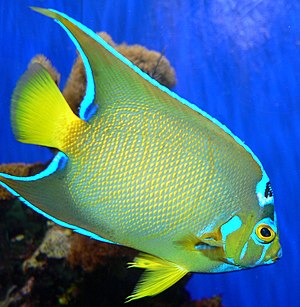






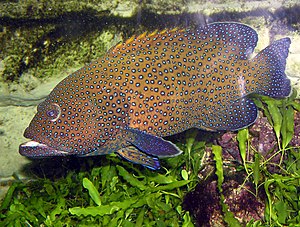










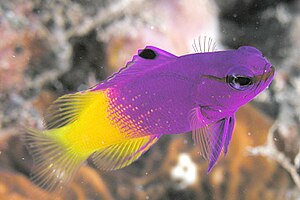


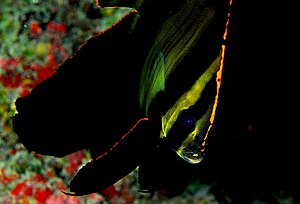



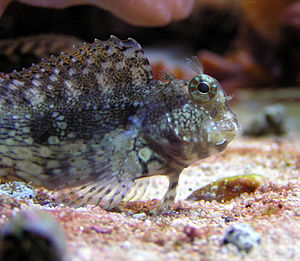
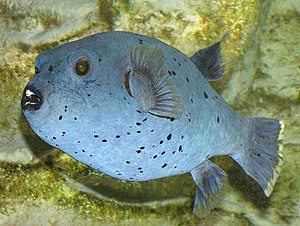






















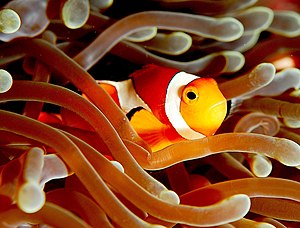

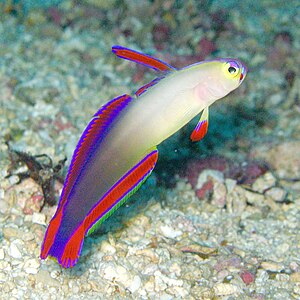
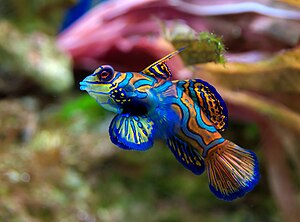














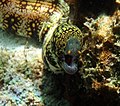



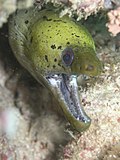









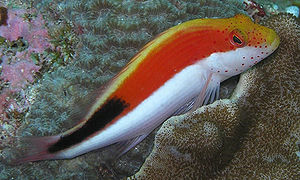


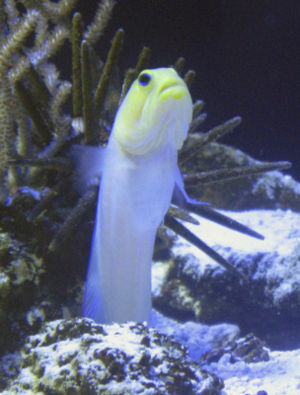



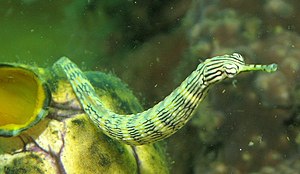

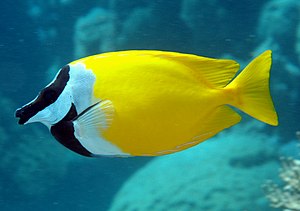







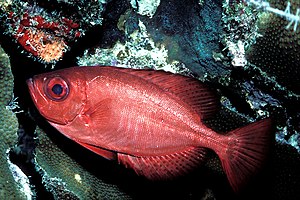
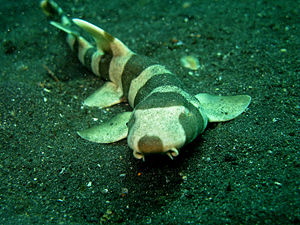
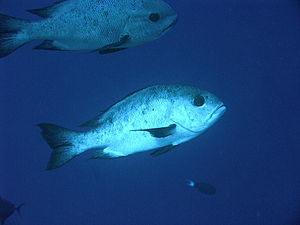

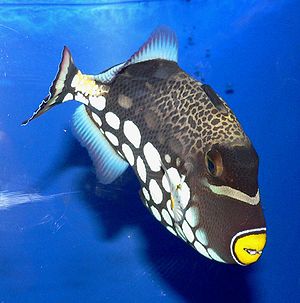

Be the first to comment